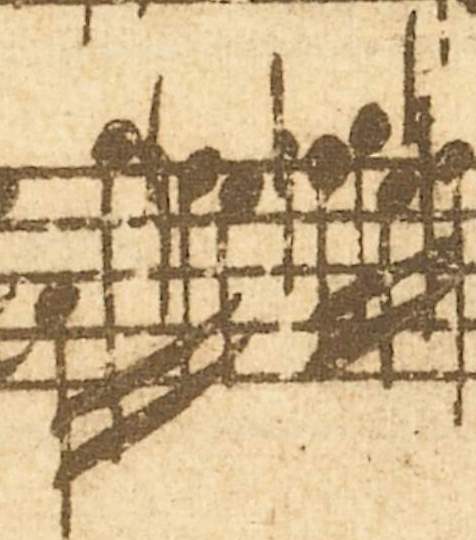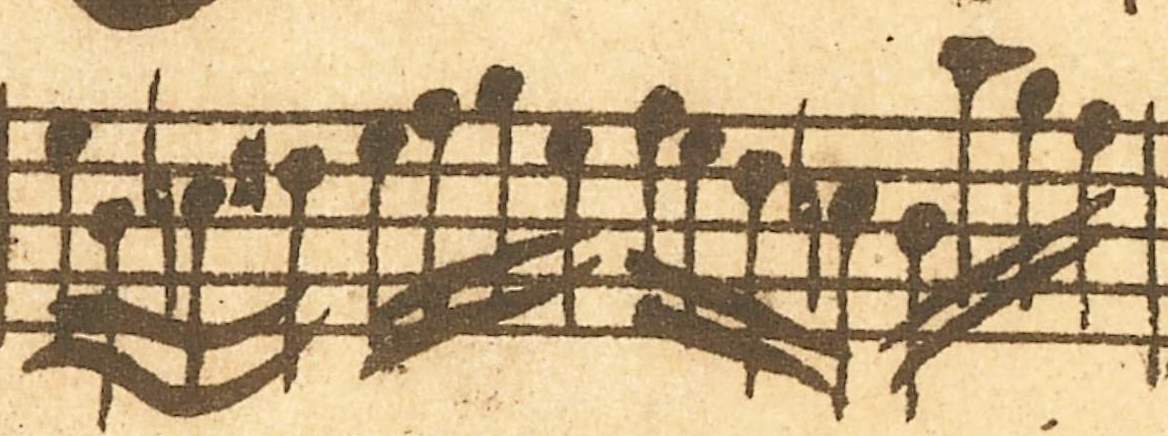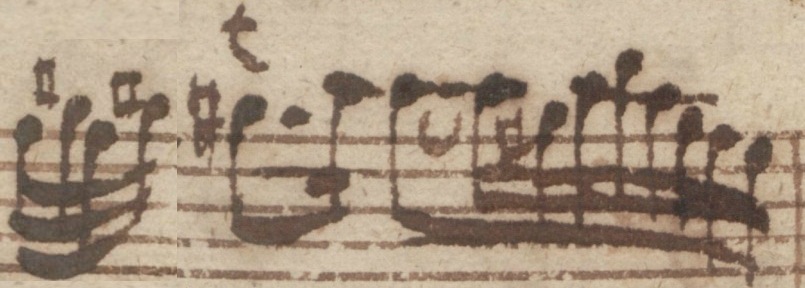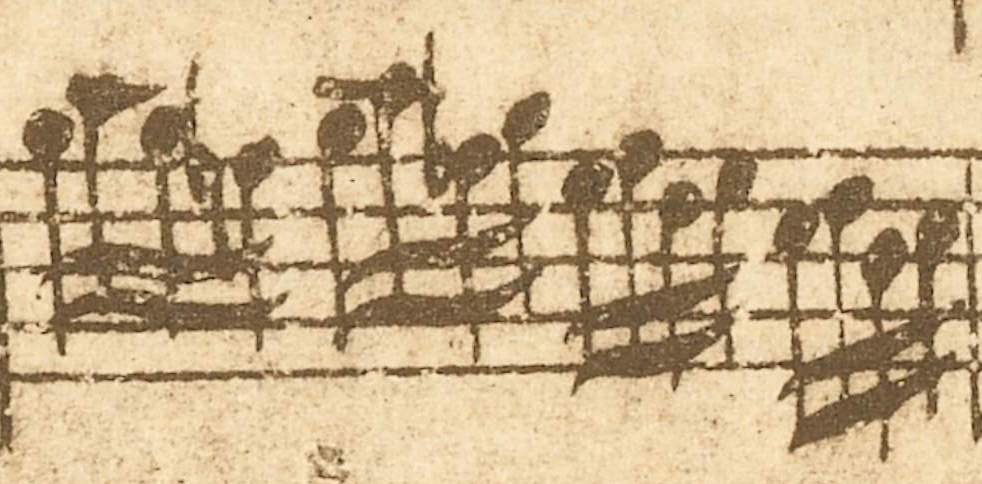 Today’s musicians tend to react to the above question with raised eyebrows. Isn’t it clear – accidentals in the key signature are always in force and for all octave registers unless annulled by natural signs. An accidental found in a measure is valid for this note and for the entire measure – no longer, no shorter. But this was not always so.
Today’s musicians tend to react to the above question with raised eyebrows. Isn’t it clear – accidentals in the key signature are always in force and for all octave registers unless annulled by natural signs. An accidental found in a measure is valid for this note and for the entire measure – no longer, no shorter. But this was not always so.
For instance, there were other rules in Johann Sebastian Bach’s time. Key-signature accidentals were indeed used as they are now, though the accidental placed within a measure was valid only for this one note. If the same note was later repeated in the bar, then the accidental had to be given again in order to be further valid.
![]() In Bach’s Invention No. 5 in E-flat major, the left hand of the second half of measure 4 looks like this in the current Henle edition (HN 64; to be read in the bass clef):
In Bach’s Invention No. 5 in E-flat major, the left hand of the second half of measure 4 looks like this in the current Henle edition (HN 64; to be read in the bass clef):
 Whereas in Bach’s autograph there are here three natural signs for note a instead of the one natural sign:
Whereas in Bach’s autograph there are here three natural signs for note a instead of the one natural sign:
Even the reverse is revealing. Bach does not have to notate any kind of accidental where in the modern edition the one-time accidental that is not supposed to be valid for the entire measure has to be annulled again.
In m. 3 of the 11th invention in g minor, it is f♯ within the 1st beat, f within the 3rd beat. Henle records this measure as follows (again to be read in the bass clef):
Whereas in Bach it is:
 So editors have to know the old accidental rules and translate these if they want to transcribe Bach’s orthography into modern notation.
So editors have to know the old accidental rules and translate these if they want to transcribe Bach’s orthography into modern notation.
As is so often the case when translating, clarity is also in our case almost unavoidably lacking. That is, the source text of Bach’s notation is unfortunately not always absolutely clear, a fact confronting the editor with the question of what is actually intended and which of the possible solutions are to be selected in the ‘translated’ – thus edited – text. Here is a prominent example that would be familiar to many musicians.
 In the Flute Sonata in b minor BWV 1030, m. 6 of the 2nd movement’s solo part, Bach notates a sharp for g2 four times, each time to be played g♯2. There is no accidental for the third from last note – so, based on the old accidental notation, g2 is obviously meant.
In the Flute Sonata in b minor BWV 1030, m. 6 of the 2nd movement’s solo part, Bach notates a sharp for g2 four times, each time to be played g♯2. There is no accidental for the third from last note – so, based on the old accidental notation, g2 is obviously meant.
 Likewise in m. 13: There is a sharp at the start of the measure making g♯2 out of the note g2 (valid even for the following tone repetitions). The sharp is subsequently repeated only once, which means that the sixth 32nd note is to be read as g2 and not g♯2.
Likewise in m. 13: There is a sharp at the start of the measure making g♯2 out of the note g2 (valid even for the following tone repetitions). The sharp is subsequently repeated only once, which means that the sixth 32nd note is to be read as g2 and not g♯2.
Why then does the Henle edition (HN 269) raise a question at both places?
In the inventions cited above there are always passages where Bach did not notate according to the ‘old’ accidental rules, but again naturalised an accidental found in the measure. In the 5th invention in E-flat major, left hand of m. 11, it would not actually have been necessary to put the ♭ sign at the 7th note:
 The natural sign for the 4th note is, according to the old rule, valid only for this note – even without the accidental the 7th note would still be read as a♭ instead of a. Bach evidently felt here that the natural sign was still in effect longer than would actually have been the case based on the old rules. In order to make sure that the 7th note would indeed be played as a♭, he thus notated a ♭ sign and hence approached modern notational conventions.
The natural sign for the 4th note is, according to the old rule, valid only for this note – even without the accidental the 7th note would still be read as a♭ instead of a. Bach evidently felt here that the natural sign was still in effect longer than would actually have been the case based on the old rules. In order to make sure that the 7th note would indeed be played as a♭, he thus notated a ♭ sign and hence approached modern notational conventions.
This ‘grey area’ in Bach’s notation as to the effective duration of an accidental leaves so many musicians in doubt at mm. 6 and 13 of the b-minor flute sonata’s 2nd movement. Did Bach here also feel that the accidental lasted for the entire measure? So, do the notes in question read g♯2? If he had really meant g2 instead of g♯2 wouldn’t he have given a natural sign for clarification? The harmonic context does indeed rather suggest g2 in both cases, yet g♯2 is definitely conceivable.
The question of the duration of accidentals is not at all answered so easily as it would appear. In particular, the ‘old’ rule for placing accidentals sometimes leaves questions open that cannot really be completely clarified. Indeed, modern notation attempts to forestall misunderstandings in this regard, nevertheless giving itself occasion for doubt (see Peter Jost’s blog posting on 3.9.2012). Our editors have to weigh all these instances and make decisions – and, where problems cannot be solved conclusively, pass on for the musicians’ experience and stylistic perception the possible variants.
How would you decide? And – do you know of similar cases?

Surely the question is more complex than this? What happens if a note with an accidental is tied to the same note in the following bar? Surely in this case the note in the following bar is the same as the one in the first bar (sharpened or flattened by the accidental)? And what happens if you have an F# in one bar, tied to an F in the following bar, then the end of the tie, and later in the bar another F? Is this sharpened, or not?
Thanks – Rowan
Dear Rowan,
thank you for adding these examples! In modern notation (as well as in “historic” notation), a tie over the barline means that the tied over note is identical to the previous one. So there is no repetition of the accidental necessary. In case there is a change of line after the barline, however, the accidental needs to be repeated in the new line (at least in modern notation). The second example you mention is a bit more tricky. In modern notation the “third” F needs to have a new accidental. The tie only makes the repetition of the accidental in front of the second F unnecessary. The accidental is, however, not valid beyond that tied over note. In old notation, on the other hand, there would not be a new accidental in front of the 3rd F. In this context any repeated identical notes do not need to have a new accidentals. I hope I could make my point clear?
Best wishes,
Norbert